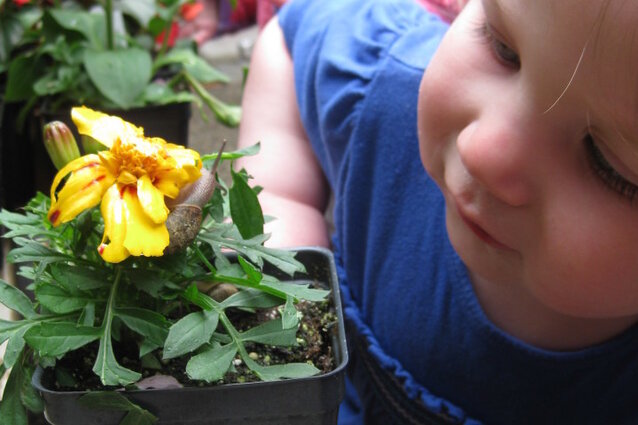
The Natural World
— Richard Louv, Last Child in the Woods: Saving Our Children from Nature-Deficit Disorder“An environment-based education movement—at all levels of education—will help students realize that school isn’t supposed to be a polite form of incarceration, but a portal to the wider world.”
— Dr. Maria Montessori, From Childhood to Adolescence“When the child goes out, it is the world itself that offers itself to him. Let us take the child out to show him real things instead of making objects which represent ideas and closing them in cupboards.”
A Montessori classroom is akin to an equilateral triangle: of equal importance are the three “sides”: the mixed-age community of children, the classroom guide and assistant, and the prepared environment.
The four walls of the classroom contain a plethora of materials and activities, arranged in logical groupings in the classroom. For example, the Primary classroom – also known as the Casa dei Bambini or “Children’s House” for ages 2 ½ through age 6 – is organized into four main areas: Practical Life, Sensorial, Language, and Math. Every curriculum material, activity, rug, table, plant, cultural object, tray, vase, or piece of art is chosen with the utmost care to be beautiful, child-sized, and developmentally appropriate; they should entice the child’s interest and use and allow for the maximum amount of independence.
But what about the outdoor environment? Dr. Montessori drew no distinction between the importance of the indoor and outdoor environments in human development. In her book, The Montessori Method, she wrote that “man still belongs to nature, and especially when he is a child, he…draws from it the forces necessary to the development of the body and of the spirit. We have intimate communications with nature which has an influence, even a material influence, on the growth of the body.”
Ideally, children should experience a free flow between the indoor and outdoor environments of their classroom. If a child wants to weed one of the garden beds, or observe an earthworm after a spring rain shower, this is every bit as beneficial to her development as constructing the Pink Tower, or building words with the Moveable Alphabet, or skip-counting the 1,000 Chain. It is not at all uncommon for children to carry their work tables, chairs, or mats outside on a lovely spring day to continue their work outside. Or sometimes gross motor, big-body movement is what calls to the child, and the outdoors is the perfect space for that.
In recent years, a growing divide or disconnect between children and nature has been documented in our culture. Researchers have made the link that children’s connection to nature results in decreased stress levels and obesity and increased empathy, physical health, and emotional well-being. But longer parent work hours, increased homework demands, and extra-curricular activities have resulted in children’s lives becoming increasingly structured, with little free time to be outdoors and play. And unstructured time that exists is increasingly consumed with electronic devices.
Fortunately, it does not take expensive sports gear or activities to create meaningful opportunities for children and families to connect to the out of doors. Here are just a few resources worth considering:
- Richard Louv’s book, Last Child in the Woods & his website, www.childrenandnature.org offer research-backed insight into the issue of “nature deficit” in children
- The Outdoor Classroom by Mary Boden is a wonderful resource for activities that can be easily implemented in the outdoor environment. It’s written with a Montessori classroom in mind, but all the activities (for example, Watering the Garden, Making a Bird Feeder, Raking Leaves, Egg Shell Grinding, etc.) can easily be implemented at home. The book is readily available from the Montessori Services website: www.montessoriservices.com
- The website www.mariamontessori.com features a blog post entitled, “A Classroom Without Walls: Deepening Children’s Connection with Nature” http://mariamontessori.com/mm/?p=1788
- And from the blog, “Rebecca Plants” (http://www.rebeccaplants.com/outdoorliving.asp) is another fantastic resource of simple garden and outdoor activities to inspire outdoor activity. One of the downloads is a list of 50 outdoor activities Guide for busy families – even just 15 minutes outside can make a world of difference.
